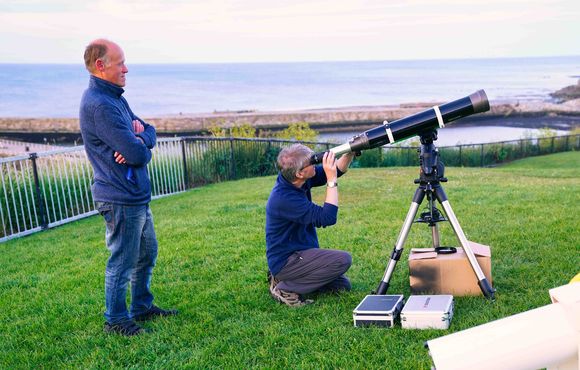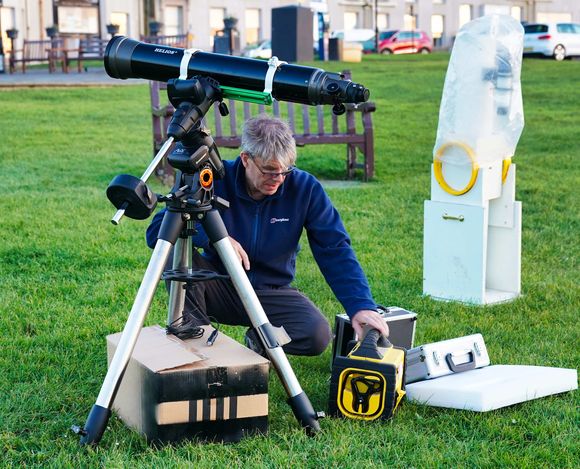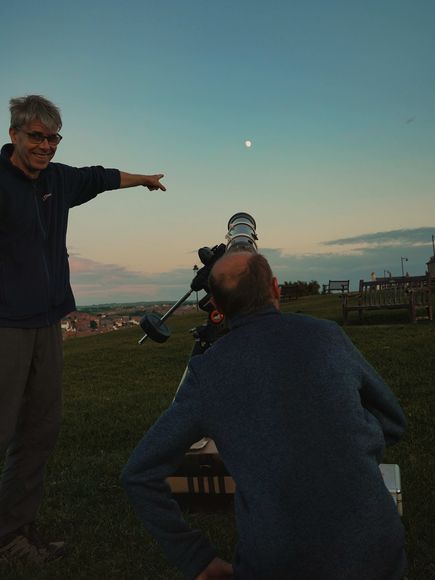We know the light nights at this time of year are always going to be very restrictive on just what is observable by late evening; however the absence of any planets in the evening sky really did cut down observing possibilities to lunar viewing only. Beggars can't be choosers though and this first event did at least allow society members (Keith, John L and Mark) the opportunity to set-up the recently acquired Celestron mount married to the Helios 120mm refractor.
Initial set-up, no finder, no dew shield, rather too light - who cares the moon looks stunning!
(click for larger image) Image by Keith D.
The only other scope required that night was the 8" dobsonian. Having assembled the Celestron AVX mount, tripod and scope our hopes of using it in GOTO mode were dashed by a faulty power tank, which had been a little temperamental for a while, but was obviously not holding its charge. A new power source will be required. We could at least use the scope manually (sort of - no manual fine tuning control with this mount). The finder scope and dew shield were also absent - Mark having forgotten them -Duh! So it wasn't a great start to the evening.
This power tank is deceased - not mearly resting. Time for a new one.
(click for full image) Photo by Keith D
Just as well the event was deliberately low key, having put no advertising placards out during the day, assuming footfall would be quite low. As it turned out the fine conditions had drawn quite a few people out, chiefly to capture the sunset, something Keith managed admirably.
So, having watched the Sun go down, we turned our attention to the gibbous moon -well placed to the south. The image was excellent, still enough shadow created on the terminator edge to highlight the lunar terrain. There were people about and those members of the public, who wandered over to see what was going on, were amazed at the spectacle greeting them through the eyepiece. (Still cannot get over how many people have never seen the Moon close-up)
Only as the evening turned to dusk did we notice a star next to the moon, but what star? No stars were anywhere near being visible to the naked eye and none of us could recall from apps, planetarium programs etc any (apparent) bright star being that close to the moon in the eyepiece. It seemed a bit of a mystery, and having tried to work out what 'bright' stars should be almost visible and where, we came to the conclusion it must be Spica! Yes, sure that was it, but we'd check later to confirm. Mark checked... it wasn't Spica, that would have been further to the west (but not visible to the eye), no, it was actually Alpha Libra - Zubenelgenubi a star of magnitude of 2.75! Not bright at all really, just very noticeable right next to the Moon. Just goes to show how you can be fooled and convince yourself of something wrongly!
The next star party is scheduled for Saturday - July 9th: 21:15hrs from West Cliff -Cpt Cook statue headland. (Mark has already checked to see if any stars are close by the Moon) Almost another month will lapse before we can really start to host events more regularly starting with Whitby Regatta.
- Log in to post comments






